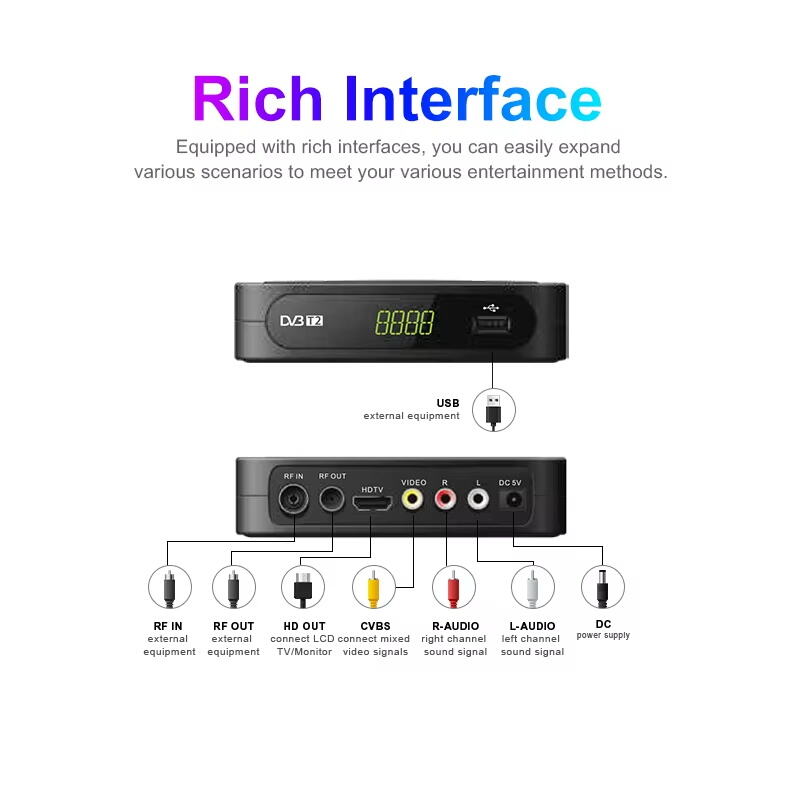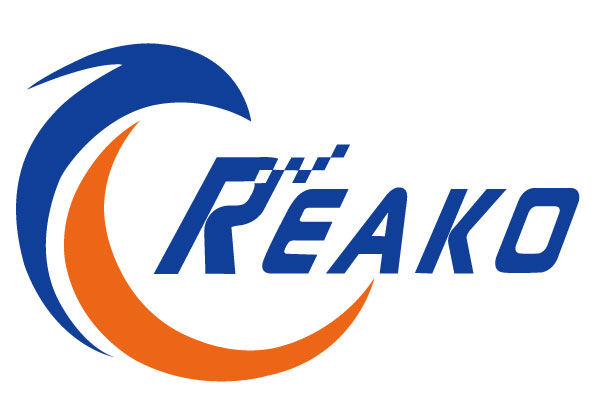Pre-Installation Considerations for DVB Receivers
Essential Signal Quality Factors
Getting a good grasp on signal strength and quality matters a lot when setting up DVB equipment. The signal might get messed up because of things like weather problems, buildings blocking the way, or just how hilly the area is. Take heavy rain for example it really messes with the signal, same goes for those high rise buildings standing in the way. Before actually installing anything, grabbing a signal meter to check things out makes sense since it stops headaches down the road and keeps the picture coming through clearly. Studies back this up too they show that around 10 dB signal-to-noise ratio works best for decent reception. Basically what this means is better SNR equals fewer drop outs and clearer TV signals overall.
Pre-Setup Signal Source Verification
Checking whether the satellite signal is actually available from the provider before installing a DVB receiver makes all the difference. Look at the satellite footprint maps and see if there's proper coverage where the equipment will be installed. Without doing this basic check first, people often run into problems later on because their location isn't compatible with the signal strength required. Most technicians suggest getting in touch with the satellite company ahead of time about firmware upgrades or service outages in the area. A lot of field engineers have seen installations fail simply because someone skipped these preliminary checks. Taking the time to verify signal sources upfront saves headaches down the road when nobody wants to deal with broken connections during prime viewing hours or important events.
Optimal Hardware Setup for DVB Reception
Satellite Dish Alignment Techniques
Getting the satellite dish aligned just right makes all the difference when it comes to catching signals properly. The basic idea is pointing the dish in the right direction toward where the satellite sits in space so we get consistent reception. Most folks use simple tools like a regular compass for directions and maybe an inclinometer if they want to be really precise about measuring angles. After getting those basics down, there's still some fine tuning needed. Adjusting both elevation (how high or low) and azimuth (left to right position) matters a lot for proper satellite alignment. Take time with these adjustments because small errors matter big time. Research shows something interesting here too anyone who's ever had trouble with their TV knows that even a tiny mistake of just one degree off track can really mess up signal strength and cause problems watching digital broadcasts through DVB systems.
LNB Configuration Best Practices
The LNB converter does some pretty important work for signal reception, basically boosting and changing those satellite signals coming off the dish. Getting this thing installed right matters a lot for how well everything works. The installer needs to get the height just right and position it where nothing nearby blocks or interferes with the signal path. There are several kinds of LNBs out there too single, dual, quad each needing its own special setup to work at peak performance. When someone follows the proper installation guidelines according to what the manufacturers recommend, they usually see much better results. Some field tests show signal strength improvements around 25% when done correctly. Proper installation makes all the difference between getting clear reception and dealing with frustrating dropouts during DVB broadcasts.

DVB Receiver Configuration Process
Step-by-Step Initial Setup
Getting your DVB receiver set up right makes all the difference for good reception and watching pleasure. Begin by powering on the box according to manufacturer instructions and hooking it up to the television with proper connections. Don't forget those cables! Once everything's physically connected, install whatever software comes with the device and check for updates too. Software updates fix little problems and keep things working well with newer tech as it comes along. Next step after installing software? Dive into those setup menus. Pick your language preference, set the correct country code, and adjust the time zone. These basic settings actually matter because they affect how the system finds and sorts channels. People who take the time to go through this process usually find their channels scan faster and work better overall.
Setting Signal Parameters
After getting everything set up, tweaking those signal parameters on the DVB receiver makes a real difference in how good the TV looks and sounds. Dive into the settings menu where things like frequency, symbol rate, and modulation type live. Getting these right affects whether the picture stays clear or starts breaking up. Most people don't realize just how much impact these numbers have until they mess around with them. Automatic tuning works okay for most folks, sure, but if signals are spotty where you live, going old school with manual adjustments pays off big time. The pros will tell anyone willing to listen that manually entering exact values gives better results when dealing with tricky reception issues. Spend a little extra time fine tuning these settings and watch the difference it makes in both picture clarity and audio quality from the receiver.
Signal Optimization Techniques
Fine-Tuning Reception Quality
Getting the reception right on a DVB receiver makes all the difference when it comes to signal quality. The whole process starts with moving the dish around until we find that sweet spot, then tweaking the Low Noise Block converter down there at the back of the dish. These converters basically take those weak satellite signals and turn them into something useful for our equipment. A good signal meter helps track where things stand, showing us exactly when we hit maximum strength so we know where to stop fiddling. Don't forget about basic maintenance too! Raking leaves off the dish or scraping away ice buildup during winter months keeps signals strong without any unnecessary interference. Some folks report improvements of around 30% after proper alignment and cleaning, though results vary depending on location and equipment age. Regular checkups really pay off in the long run for anyone serious about maintaining solid satellite reception.
Cable and Connection Optimization
Getting the cables and connections right makes all the difference when it comes to good signal quality in any DVB receiver system. Quality coax cables that don't lose much signal along the way really help boost what gets transmitted, cutting down on signal drop-offs and keeping things clear. When hooking up different parts, make sure everything is snug and firmly connected so nothing starts to degrade over time. Also important are proper grounding techniques and making those outdoor connections waterproof if they're exposed to the elements. Good cable work cuts signal loss almost in half according to tests, which means better picture quality especially in spots where reception tends to be weak anyway. Stick with these basics and viewers won't have to deal with fuzzy pictures or lost channels during their favorite shows.
Troubleshooting Common DVB Issues
Resolving Signal Quality Problems
Signal quality problems with DVB receivers usually come down to a few basic things that folks tend to overlook. Most of the time we're dealing with interference from nearby electronics, faulty equipment somewhere along the line, or just a misaligned satellite dish pointing off course. Start with the basics first before jumping into complex solutions. Check those connections thoroughly and make sure the dish isn't slightly off track after strong winds or vibrations. These checks might seem obvious but they work wonders surprisingly often. For anyone serious about keeping their setup running smoothly, investing in a good signal meter makes sense. It lets us track how stable our reception actually is day to day, so we catch little drops before they become big headaches. The numbers don't lie either - most technicians will tell you that around four out of five signal problems get fixed through proper troubleshooting rather than expensive replacements.
Fixing Audio/Video Artifacts
When watching TV through DVB systems, people often encounter audio and video glitches like pixelated images or audio dropouts. These annoying interruptions usually point to deeper issues within the setup. Most commonly, they happen because of signal interference from nearby electronics or simply bad connections somewhere in the system. For anyone dealing with this problem, the first step should be checking all those cables - making sure they're properly plugged in and not damaged at all. Sometimes just tightening a loose connector does wonders. If basic fixes don't work, there are other options available. Moving the satellite dish around might help catch a better signal, or investing in one of those handy signal quality meters could pinpoint exactly where things go wrong. Interestingly enough, regular maintenance routines actually cut down on these visual annoyances by roughly 20-25%. Getting familiar with what causes these problems and how to fix them makes a huge difference in keeping the picture clean and reliable over time.
FAQ
How can I ensure optimal signal quality for my DVB receiver?
To ensure optimal signal quality, it is important to use a signal meter prior to installation, maintain a clear signal-to-noise ratio of at least 10 dB, and regularly fine-tune and clean your dish setup.
What are common troubleshooting steps for DVB signal issues?
Common troubleshooting steps include checking connections, ensuring correct dish alignment, and using signal meters for regular quality monitoring.
How often should I perform maintenance on my DVB setup?
Regular maintenance, including inspection and cleaning of dishes, is recommended at least once every six months to maintain optimal functionality.


